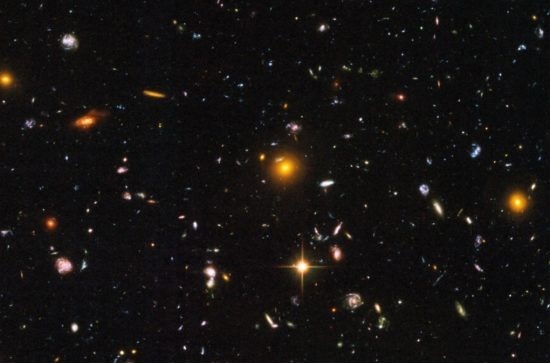A new computer simulation of the early universe has been built by researchers, and it closely matches data obtained with the James Webb Space Telescope (JWST).
 Image of distant galaxies taken by the James Webb Space Telescope. Image Credit: NASA, ESA and S. Beckwith (STScI) and the HUDF team
Image of distant galaxies taken by the James Webb Space Telescope. Image Credit: NASA, ESA and S. Beckwith (STScI) and the HUDF team
The first JWST observations suggested something was wrong with the idea of early galaxy formation. Compared to theoretical expectations, the first galaxies observed by JWST seemed to be more massive and brighter.
The results, which were presented in The Open Journal of Astrophysics, were obtained by Maynooth University and Georgia Tech researchers. They demonstrate that the data obtained with JWST are consistent with theoretical expectations. The team’s “Renaissance simulations” are a set of extremely complex computer models of galaxy formation in the early Universe.
The simulation can track and resolve extremely minute dark matter clumps as they congeal and form dark matter halos, which host the types of galaxies that the eyes can see. Population III stars, predicted to be far more massive and brilliant than current stars, are the very first stars to develop in the universe and can also be modeled by the simulations.
These galaxies are consistent with the models dictating the physics of the cosmic simulations, according to the simulations used by the MU team.
We have shown that these simulations are crucial in understanding our origin in the Universe. In the future, we hope to use these same simulations to investigate the growth of massive black holes in the early Universe.
Joe M. McCaffrey, Study Lead Author and PhD Student, Department of Theoretical Physics, Maynooth University
Dr. John Regan, Associate Professor at Maynooth’s Department of Theoretical Physics, stated, “The JWST has revolutionized our understanding of the early Universe. Using its incredible power, we are now able to glimpse the Universe as it was only a few hundred million years after the Big Bang—a time when the Universe was less than 1% of its current age. What JWST is showing us is that the young Universe was bursting with massive star formation and an evolving population of massive black holes. The next steps will be to use these observations to guide our theoretical models—something which up until very recently was simply impossible.”
Journal Reference:
McCaffrey, J., et al. (2023) No Tension: JWST Galaxies at z > 10 Consistent with Cosmological Simulations. The Open Journal of Astrophysics. doi:10.21105/astro.2304.13755